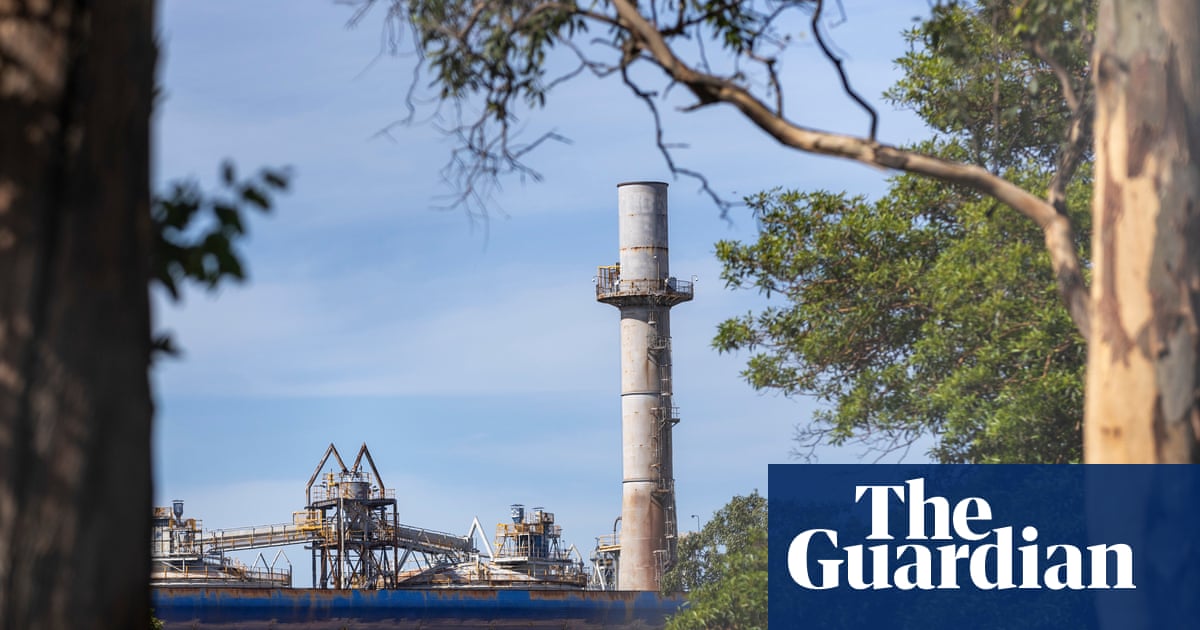Will 2025 be remembered as the year of the bailout?
More than $3bn of taxpayer money has been committed to propping up the country’s hugely power-hungry metal making and smelting industries.
So far, the support has been alarmingly ad-hoc.
A foreign-owned smelter says it will shut its doors and layoff its workers without taxpayer help, and the government, state or federal, duly obliges.
A $2.4bn rescue package for the Whyalla steelworks in South Australia in February kicked off the trend.
Sign up: AU Breaking News email
The steelworks are now in the final stages of a sales process that may involve taxpayers taking a stake in a business with an uncertain future.
Amid a global mood for more industrial intervention, more taxpayer handouts are surely to come.
Head of the Grattan Institute’s energy and climate change program, Alison Reeve, said it was concerning that there was no evidence of an overarching strategy behind this year’s series of industrial interventions.
“We seem to be at risk of bailing out people as they turn up,” Reeve said.
The latest pitch for a government handout is from Australia’s biggest aluminium smelter, Rio Tinto’s Tomago.
The smelter, based in New South Wales’s Hunter region, has joined a conga line of metals manufacturers looking for taxpayer cash and threatening to close shop if they don’t get it.
Already struggling with its electricity bill, Tomago – which alone accounts for 10% of NSW’s electricity usage – said it had failed to lock down a “commercially viable” energy contract beyond 2028.
That meant the company may have to close its doors before the end of the decade, Tomago’s boss, Jerome Dozol, said.
Clearly, high energy costs lie at the heart of the challenges facing Australia’s power-intensive heavy industries, which also face intense international competition.
The industry minister, Tim Ayres, on Tuesday pointed to “a very tough and volatile global trading environment in aluminium”, including “over-subsidisation in some markets, tariff responses in others”.
“Each of these assets around the country is a bit different,” Ayres said.
“But typically, [it’s] ageing infrastructure that requires investment to lift its level of productivity and efficiency.”
The minister said the government was in “close discussions” with Tomago Aluminium about addressing the company’s inability to secure affordable energy for the longer term.
What seems certain is that the taxpayer is about to be put on the hook again to ensure the smelter’s future.
This year’s requests for handouts have typically been made under threats of major job losses, mostly in regional areas where the exit of a major employer could be devastating to local towns.
Reeve said there was a case to protect our industrial base as the country navigates a fraught transition from fossil fuels to renewable energy.
“Smelting is one area where we can value-add to a mineral resource using energy that should be cheaper and greener than the rest of the world. And once you have lost that capacity, it’s very hard to get back,” she said.
“That might provide some limited grounds to help out somebody like Tomago. But you really want to know it has a pathway to becoming viable and green. And that’s where the bailouts should focus: what can governments do to make that come true?”
A number of observers have compared the contrasting experiences of Tomago in NSW and that of Rio Tinto’s other aluminium smelting business in Queensland, Boyne Smelters.
Rather than being at the mercy of existing energy providers, Boyne has signed power purchase agreements that have underpinned the development of major new solar and windfarms.
Reeve said the lesson was that governments should be thinking harder about how to support the long-term viability of industries considered strategically important, beyond simply showering them in cash.
In Tomago’s case, the NSW government should be taking steps to streamline renewable projects in a state notorious for its long delays.
Glencore, a Swiss mining multinational, earlier this month received a $600m taxpayer bailout to keep its loss-making copper smelter open for another three years.
Ayres at the time defended the decision and said the bailout was “not a blank cheque”.
But a look at the history of Queensland’s Mount Isa copper smelter reveals a history of recurring handouts that sets a precedent for this year’s bailouts.
The owners of the smelter threatened to close it in 2011, in 2016, and again in 2020.
These threats happened to coincide with the state’s election cycle, and each time the Queensland taxpayer rode to the rescue: to the tune of $85m in 2012, $15m in 2016, and a multimillion-dollar undisclosed amount in 2020.
That was on top of taxpayer-subsidised upgrades to railway and energy infrastructure.
“Mt Isa has been bailed out every roughly five years for the past 20 years,” said Reeve.
“That’s the trap you don’t want to fall into.”
Quick GuideContact us about this storyShow
The best public interest journalism relies on first-hand accounts from people in the know.
If you have something to share on this subject, you can contact us confidentially using the following methods.
Secure Messaging in the Guardian app
The Guardian app has a tool to send tips about stories. Messages are end to end encrypted and concealed within the routine activity that every Guardian mobile app performs. This prevents an observer from knowing that you are communicating with us at all, let alone what is being said.
If you don’t already have the Guardian app, download it (iOS/Android) and go to the menu. Select ‘Secure Messaging’.
SecureDrop, instant messengers, email, telephone and post
If you can safely use the Tor network without being observed or monitored, you can send messages and documents to the Guardian via our SecureDrop platform.
Finally, our guide at theguardian.com/tips lists several ways to contact us securely, and discusses the pros and cons of each.
Illustration: Guardian Design / Rich Cousins
Thank you for your feedback.

